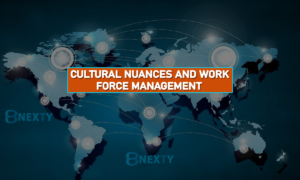10 Powerful Insights for Navigating IT Challenges in Multi-Nation Markets: UAE, USA, and India

In today’s globalized economy, IT challenges in multi-nation markets are increasingly complex. For IT companies operating in regions such as the UAE, USA, and India, navigating these challenges requires a strategic approach. Each market presents unique opportunities and obstacles in areas such as regulatory frameworks, workforce management, technological infrastructure, and market competition. This blog delves into the key IT challenges in these regions and offers 10 proven strategies to overcome them.
1. Navigating Regulatory Challenges in IT Across the UAE, USA, and India
The regulatory environments in the UAE, USA, and India present distinct challenges that IT companies must address.
UAE: The UAE’s regulatory framework is rapidly evolving, with a strong emphasis on digital transformation. However, businesses must comply with data protection laws and cybersecurity regulations. Companies should understand the legal requirements of free zones and mainland operations to stay compliant.
USA: The US regulatory environment is complex, with federal and state laws governing data privacy, cybersecurity, and intellectual property. IT companies need to stay updated on regulations like the General Data Protection Regulation (GDPR) and the California Consumer Privacy Act (CCPA).
India: India is undergoing significant regulatory changes, particularly with data privacy laws, including the introduction of the Personal Data Protection Bill. Companies must be prepared to comply with local data protection and cybersecurity standards.
Strategy: Invest in legal expertise and compliance training. It’s essential to establish a dedicated compliance team to help navigate these complex regulatory landscapes effectively. Regular audits can ensure adherence to evolving laws.
2. Addressing Cultural Nuances and Workforce Management in IT Businesses
Understanding the cultural dynamics of each region is critical for managing a successful IT business. In markets like the UAE, USA, and India, companies must adjust their workforce management strategies to suit local cultures and expectations.
UAE: The UAE’s multicultural workforce requires a focus on inclusivity and cultural sensitivity. Emphasizing understanding and respect for various cultural backgrounds can improve teamwork and employee satisfaction.
USA: The American workforce values creativity and open communication. Encouraging a culture of innovation and maintaining transparent feedback channels is key to success.
India: Indian work culture often emphasizes hierarchy and respect. Understanding these cultural values can help IT businesses manage teams effectively and foster a collaborative work environment.
Strategy: Provide cultural sensitivity training and promote team-building exercises that enhance mutual understanding. Tailoring management approaches to fit local cultural norms can improve overall productivity and employee engagement.
For more insights, check out our article: Fostering Global Workforce Collaboration.
3. Overcoming Technological Infrastructure Challenges in Multi-Nation Markets
The challenges of technological infrastructure vary significantly across the UAE, USA, and India, and IT companies must adapt to ensure reliable and efficient operations.
UAE: Although the UAE is at the forefront of adopting cutting-edge technologies like AI and blockchain, companies face challenges related to infrastructure, including the need for reliable internet connectivity and adequate tech resources.
USA: The US has robust technological infrastructure but staying ahead of the curve is vital. IT companies must keep innovating and addressing emerging technologies and cybersecurity threats.
India: While India boasts a rapidly growing tech ecosystem, there are still infrastructure gaps, particularly in rural areas. Bridging the digital divide is essential for reaching a broader market.
Strategy: Invest in research and development (R&D) and scalable technological solutions. Collaborate with local governments and organizations to enhance access to infrastructure, especially in rural regions.
For actionable steps, check out: Emerging Technology Trends in 2024.
4. Managing Market Competition and Client Expectations in IT
UAE: The UAE is highly competitive, and IT companies must deliver high-quality services with quick turnarounds. This requires efficient project management and quality assurance.
USA: American clients prioritize innovation, customer service, and experience. Understanding client pain points and offering tailored solutions is crucial to standing out in this competitive market.
India: Indian clients often look for cost-effective solutions, and balancing quality with affordability is crucial for success.
Strategy: Implement agile project management methodologies to increase flexibility and responsiveness. Regularly collect client feedback to refine services and ensure that expectations are met or exceeded.
Learn more: Mastering Client Relationships in Competitive Markets.
Conclusion
Successfully navigating the IT challenges in multi-nation markets requires a comprehensive strategy that includes understanding regulatory frameworks, cultural differences, technological needs, and market competition. By investing in compliance, fostering inclusive workplace cultures, and staying ahead of technological trends, IT companies can not only overcome these challenges but also position themselves for long-term success.
Explore more resources in our Business and Finance and Technology and Innovation categories.







